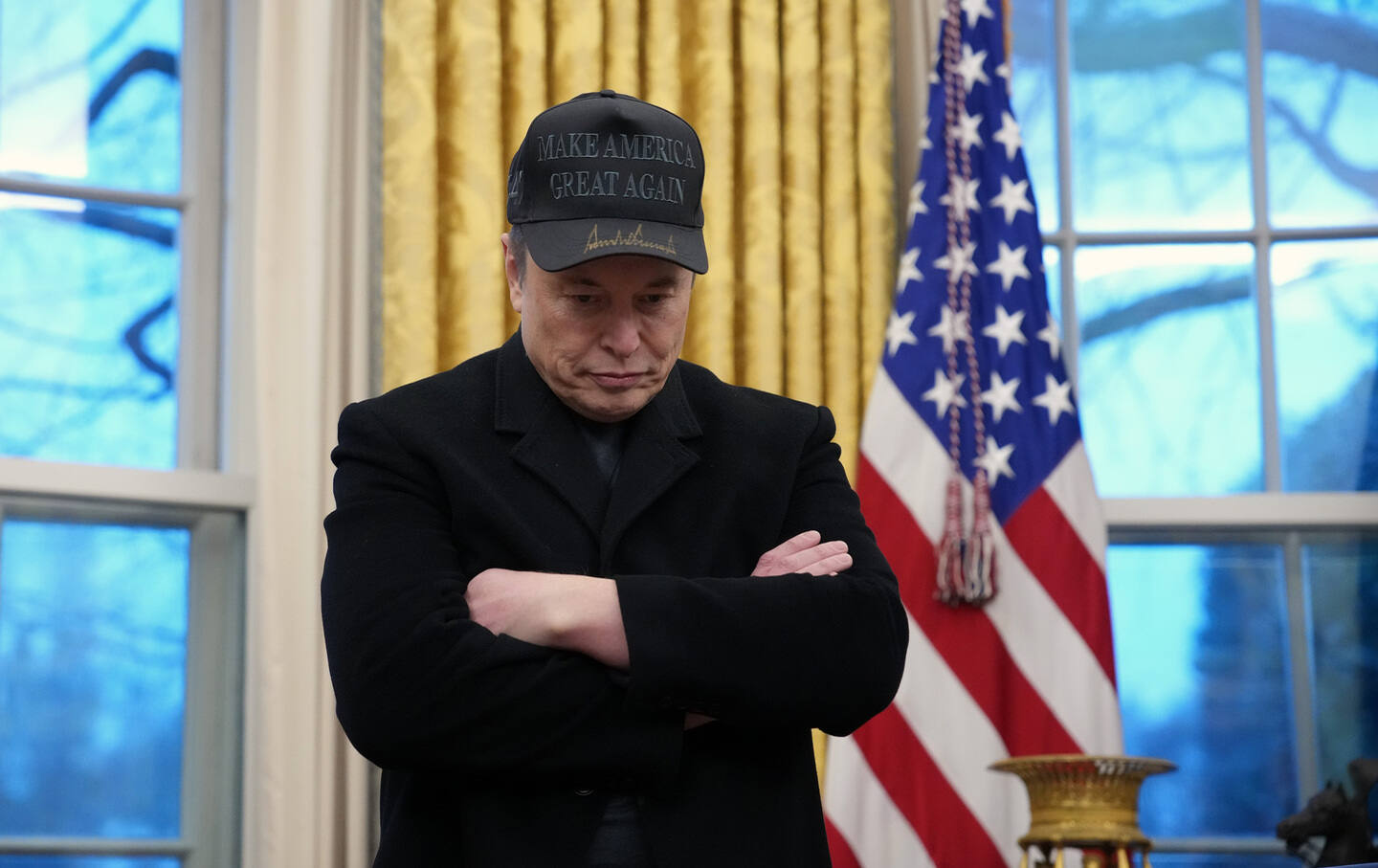Billionaires Aren’t Going to Save Us
Extreme weather events, pandemics, and other public emergencies have exposed a deep societal disease that has only grown worse after decades of neoliberal policies.
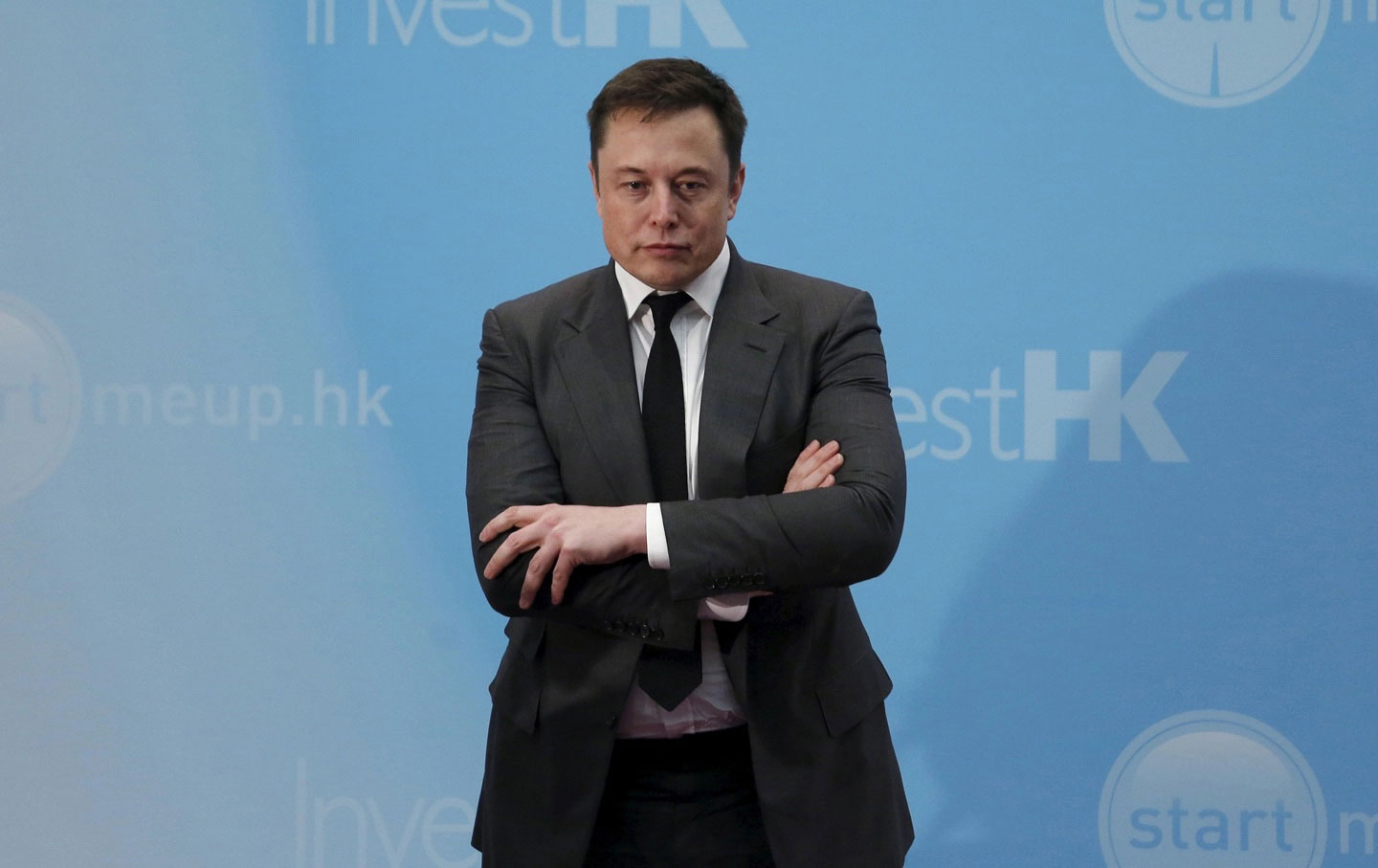
This article originally appeared at TomDispatch.com. To stay on top of important articles like these, sign up to receive the latest updates from TomDispatch.com.
It was William Shakespeare who, in Troilus and Cressida, wrote, “One touch of nature makes the whole world kin.” And yet, in the polarized news cycle since Hurricane Helene ravaged the Southeastern United States and the hurricanes have kept coming, we’ve heard a tale not of shared humanity but of ruin, discord, and political polarization.
Hundreds are dead from that storm, the deadliest to hit the mainland United States since Hurricane Katrina in 2005; hundreds more are missing, and hundreds of thousands of residences are still without power or clean water. And in addition to the staggering human loss and physical damage, a hurricane of misinformation and division has continued to pummel the region.
There’s Elon Musk’s politicized deployment of Starlink satellite Internet access, which he’s used to credit Donald Trump less than one month before the November election, while undermining the legitimacy of federal recovery efforts. Indeed, listen to Fox News or read Musk’s claims on his social-media platform X, and there’s no mention of the prearrangements the federal government made with Starlink through the Federal Emergency Management Agency (FEMA) to provide Internet access—for local governments and the Eastern Band of the Cherokee Nation.
Then, of course, there’s Trump falsely claiming that the federal government’s response to Helene was delayed and insufficient because the funds that might have gone to hurricane victims are instead being used to house undocumented immigrants. (FEMA does spend some money on migrant housing, but through an entirely different program.) With this outrageous fearmongering, he’s fanning the flames of anti-immigrant hate that are already raging during this election season. His racist and xenophobic rhetoric has also forced FEMA and the White House to spend precious time and energy trying to counter his lies, rather than focusing their full attention on saving lives and rebuilding broken communities.
And don’t forget Representative Marjorie Taylor Greene, who insisted that the government actually controls the weather. This ludicrous claim is taken from conspiracy theorist Alex Jones (notorious for arguing that the Sandy Hook school shooting was a hoax), who suggested that the government directed Helene towards North Carolina “to force people out of the region so it could mine the state’s large reserves of lithium, a key component in the batteries that power electric vehicles and store renewable energy.”
Such hateful lies and conspiracy theories (and there are more like them!) conveniently ignore the fact that conservative Republican lawmakers passed a funding bill that failed to allocate additional money to FEMA just days before Helene hit, even though the country was entering peak hurricane season in a time when the weather is growing ever more extreme. And it’s no surprise that these lawmakers are backed by billionaires who own some of the very companies most responsible for climate change. Through their scare tactics and anti-government misdirection, they have also provided rhetorical cover for the Christian nationalists and other extremists who were some of the first responders after the hurricane. The Southern Poverty Law Center confirms reports I’ve heard from local sources that “far-right militias and white supremacist organizations are moving into the region to provide assistance—and, if past disasters are any indication, drum up sympathy for their cause.”
Those Who Are Hit First and Worst
Hurricane Helene (like Hurricane Milton that followed it in a devastating fashion) should be a brutal reminder that none of us are truly safe from the worsening effects of the climate crisis. For years, local officials and real estate developers marketed Asheville, North Carolina, as a “climate haven.” With its temperate weather and mountain vistas 300 miles from the ocean, many falsely believed the area would be shielded from storms like Helene. No such luck.
Meanwhile, the last few weeks have also served as a stark reminder that the climate devastation increasingly coming for all of us is experienced most intensely by poor and low-income communities. Just look at the (lack of) full-scale evacuation plans for Hurricane Milton in Florida and it’s clear that those who cannot afford a $2,400 flight or have access to a car and enough gas money to wait out the massive traffic jams of those fleeing such storms may just be out of luck.
In western North Carolina, as rising waters from Helene consumed entire communities, many had nowhere to evacuate to. Poor people living in rural areas, often with preexisting health conditions and without health insurance, skipped hospital visits in the chaotic days immediately after the storm. Thankfully, some hospitals opened up beds for patients whose homes were destroyed. But those who don’t have flood insurance—and the residents of the areas hit hardest by Helene were the least likely to have such insurance—and can’t afford to rebuild may soon find themselves joining the many others who have been displaced and made homeless by the storm.
Truly, as the experiences of Hurricane Helene—and now Hurricane Milton, Nadine, and potentially others, too—have proven, the economic disparities that are laid bare and intensified by the climate crisis are absent from the supposed “economic populism” of climate-change deniers like Donald Trump and JD Vance. In fact, it was Vance who called the study and analysis of climate change “weird science” during the vice-presidential debate. He has also praised the lead author of the Heritage Foundation’s Project 2025, which proposes gutting FEMA, making it harder for states to get disaster relief, and blocking federal agencies from fighting climate change (not to mention 400 pages of other suggested cuts to this country’s social safety net).
And although they claim that the Harris-Walz ticket is looking after the interests and profits of the wealthy, it’s Vance and Trump who have regularly belittled the poor and cozied up to venture capitalists, tech billionaires, and others among the nation’s corporate elite. In fact, the decades-old abandonment of rural Appalachian communities destroyed by Helene has long been justified by the patronizing and classist “culture of poverty” arguments that Vance himself helped keep alive with his memoir, Hillbilly Elegy.
Storms like Hurricane Helene are a force amplifier of deep societal inequities that will worsen if Trump and Vance are elected in November, but in truth the issue runs deeper than just one political party. Indeed, over the last few years, extreme weather events, pandemics, and other public emergencies have exposed a deep societal disease that has only grown worse after decades of neoliberal policies. Worsening poverty and widening economic inequality should be considered preexisting conditions that are only magnified during moments of crisis. Manoochehr Shirzaei, an associate professor of geophysics at Virginia Tech, recently put it this way: “The tragic flood event in the southeast U.S. is a poignant example of the confluence of multiple factors, including development in floodplains, inadequate infrastructure maintenance and management, and the specter of climate change, whose compounding effect can amplify the disaster.”
From Mutual Aid to Community Power
In the face of so much loss and destruction, the heroism of impacted communities, which have joined together in extraordinary acts of solidarity, has been tragically underreported in mainstream media outlets. Much of the mutual aid and community support for those affected by the hurricane has come from community members themselves, who are working tirelessly to ensure that everyone in need is cared for. The streets of Asheville and neighboring towns have been filled with cars with out-of-state license plates, as everyday people with various skills have driven in from all over the country to lend a hand. On social media, it’s been heartening to see all of the love and support that has poured into these communities.
In Asheville, the stories of this local solidarity are many. There is the Asheville Tool Library, which, while officially closed, is supporting repair projects, including the fixing of generators and chainsaws. There are medics and doctors running free clinics. There are local breweries that are using their equipment to make sure desperate communities still have clean and safe water. There are young people passing out free gasoline to anyone who needs it and others who are writing out instructions in English and Spanish on how to make dry toilets.
These examples of grassroots leadership offer hope in hard times. After all, this is how bottom-up movements have so often begun throughout American history. In pre–Civil War America, hundreds of thousands of enslaved people smuggled themselves to freedom on the Underground Railroad, forcing the nation to confront the horrors of slavery and igniting a movement to end it. In the 1930s, the hungry and out-of-work began organizing unemployment councils and tenant-farmer unions even before President Franklin Roosevelt launched the New Deal. In the decades before the civil rights movement, Black communities organized themselves to oppose lynch mobs and other forms of state-sanctioned (or state-complicit) violence. And no one can deny the powerful example of the carpools and other community projects of the Montgomery, Alabama, freedom struggle during the 1950s.
Indeed, contrary to media narratives that often paint hard-pressed communities as dangerous and their members as only looking out for themselves, the truth is that people in crisis usually do whatever they can to provide for their communities and protect those around them. Dispossessed people care for one another, share what they have, and lend a hand through mutual-aid networks. Such survival struggles may not be enough on their own, but provide fertile ground for deeper organizing among widely disparate American communities that, through the experience of increasingly common mass crisis events, are being awakened to the need for deeper, systemic change.
The Black Panthers’ Projects of Survival
Consider the free breakfast program organized by the Black Panthers in the 1960s. For many Americans, the enduring image of the Black Panther Party is of Black men in berets and leather jackets carrying guns. The self-defense tactics of the Panthers were an emphatic rebuttal to a society that regularly dehumanized and exacted violence on Black Americans. But in truth, most of their time was spent then meeting the needs of their communities and building a movement that could transform the lives of poor Black people. The Panthers bravely stepped into a void left by the government to feed, educate, and care for the poor. But their survival programs weren’t just aimed at meeting immediate needs. For one thing, they purposefully used such programs to highlight the failures of government policymaking to deal with American poverty. By feeding tens of thousands of people, they also forged community-wide relationships and developed widespread trust among the poor, not just in Black communities but in poor white and Latino communities as well. The Panthers’ survival programs were always meant to be launchpads for a wider movement to end poverty and systemic racism.
Indeed, the Panthers consciously called out the grim paradox of a nation that claimed there was never enough money to fight poverty at home, while it spent billions of dollars fighting distant wars on the poor of Vietnam, Cambodia, and Laos. (This paradox continues today, as the United States has been funding Israel’s wholesale destruction of Gaza, one of the poorest places on earth, and now its invasion of Lebanon). Their survival programs gave them a base of operations from which to organize new people into a human rights movement, interweaving all of their community work with political education and highly visible protest.
Popular
“swipe left below to view more authors”Swipe →At the time, J. Edgar Hoover’s FBI listed the Black Panthers and their breakfast program as “the greatest threat to internal security in the country.” Government officials feared that such organizing could potentially catch fire across far wider groups of poor Americans at a moment when the War on Poverty was being dismantled and the age of neoliberal economics was already on the rise. In that context, the ability of the Panthers to put the abandonment of poor Black people under a spotlight, unite leaders within their community, and develop relationships with other poor people across racial lines was a far more dangerous threat to the oppressive status quo than the guns they carried.
Solidarity Among the Poor
The experience of the Black Panthers features prominently in the anti-poverty organizing tradition that I come from. In fact, the National Union of the Homeless and the National Welfare Rights Union, sibling poor people’s movements that I was part of in the 1990s, used to teach new organizers the “Six Panther Ps” of poor people’s organizing: (1) Program, (2) Protest, (3) Projects of survival, (4) Publicity work, (5) Political education, and (6) Plans, not personalities. When combined, these six principles form a model for the poor organizing the poor that has been responsible for creative nonviolent action that has called America to conscience and for anti-poverty policies that have impacted millions.
Much like recent beautiful acts of local solidarity in the mountains of western North Carolina and Tennessee and in low-income communities across Florida reeling from Hurricane Milton, the significance of the historic work of the Black Panther Party or of unhoused leaders and welfare-rights activists across the decades begins within poor communities themselves, where people are already engaging in life-saving actions. Out of such depths, grassroots leaders find new and creative ways to connect survival strategies and projects of the poor to a wider movement focused on building and wielding political power. From such local struggles come the very policy solutions to a community’s (and even this country’s) varied problems. This is what it means to work bottom up, not top down!
In a world whose weather is growing grimmer by the year, such examples of mutual solidarity and mutual aid are perhaps the most concrete and material form of hope in these hard times. Such scrappy and life-giving action needs more than acknowledgment and appreciation. Those facing injustice, violence, and displacement need more than thoughts and prayers. Rather, to turn the tide on division and lies, as well as deeper impoverishment and pain, heroic and creative community-building—or what I like to call “lifting from the bottom so that everyone can rise”—must be spread, scaled up, and significantly supported by the larger society. Our politicians, news agencies, and larger population must stop paying homage to billionaires who will profit off our predicaments or politicians who will try to capitalize on any crisis. It’s time to see that projects of survival and solidarity among those struggling the most are our only true hope for a future that will otherwise be ever more perilous.
Support independent journalism that exposes oligarchs and profiteers
Donald Trump’s cruel and chaotic second term is just getting started. In his first month back in office, Trump and his lackey Elon Musk (or is it the other way around?) have proven that nothing is safe from sacrifice at the altar of unchecked power and riches.
Only robust independent journalism can cut through the noise and offer clear-eyed reporting and analysis based on principle and conscience. That’s what The Nation has done for 160 years and that’s what we’re doing now.
Our independent journalism doesn’t allow injustice to go unnoticed or unchallenged—nor will we abandon hope for a better world. Our writers, editors, and fact-checkers are working relentlessly to keep you informed and empowered when so much of the media fails to do so out of credulity, fear, or fealty.
The Nation has seen unprecedented times before. We draw strength and guidance from our history of principled progressive journalism in times of crisis, and we are committed to continuing this legacy today.
We’re aiming to raise $25,000 during our Spring Fundraising Campaign to ensure that we have the resources to expose the oligarchs and profiteers attempting to loot our republic. Stand for bold independent journalism and donate to support The Nation today.
Onward,
Katrina vanden Heuvel
Editorial Director and Publisher, The Nation
More from The Nation
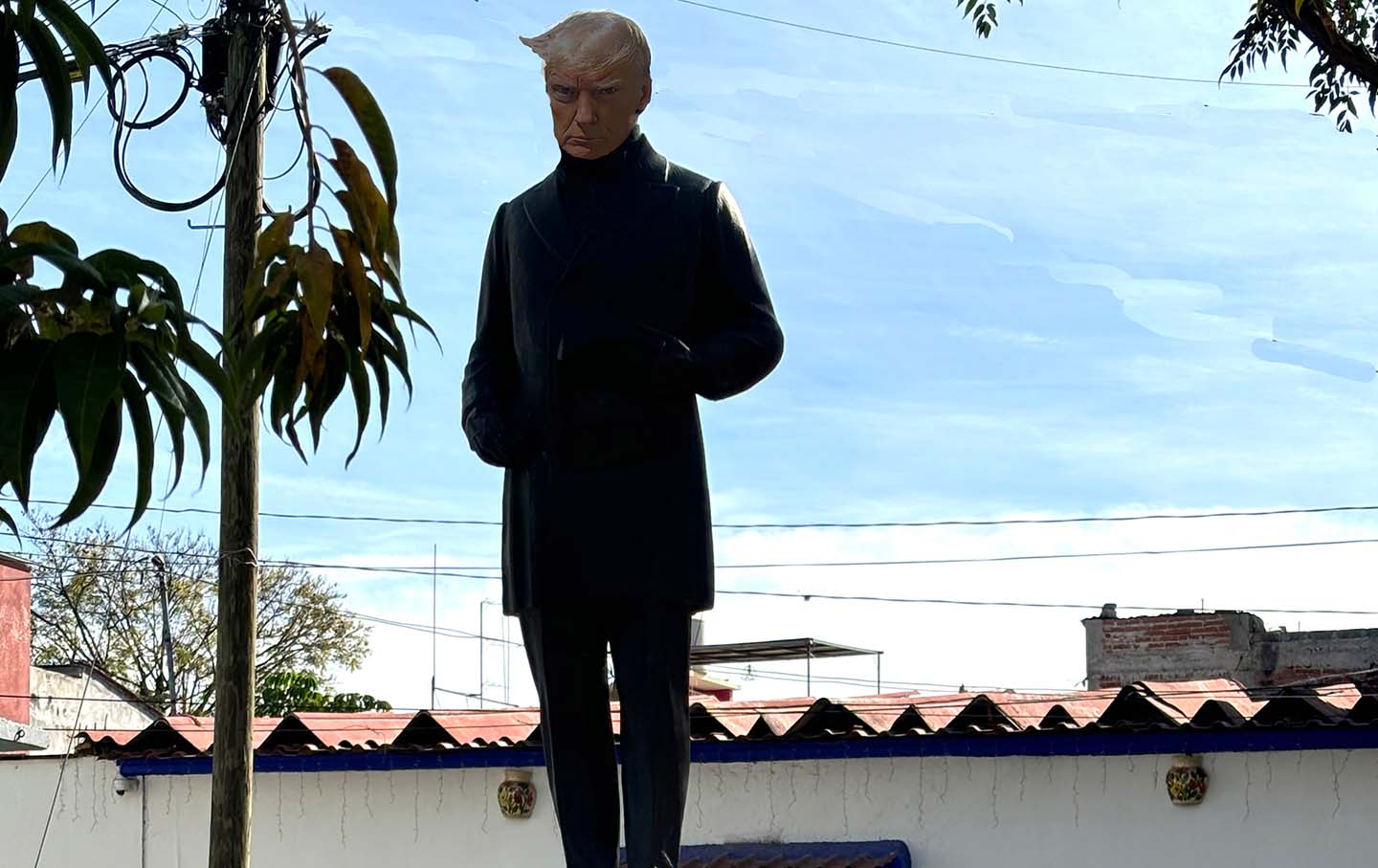
Making Enemies With the World Making Enemies With the World
Trump’s anti-immigrant position is devastating lives.
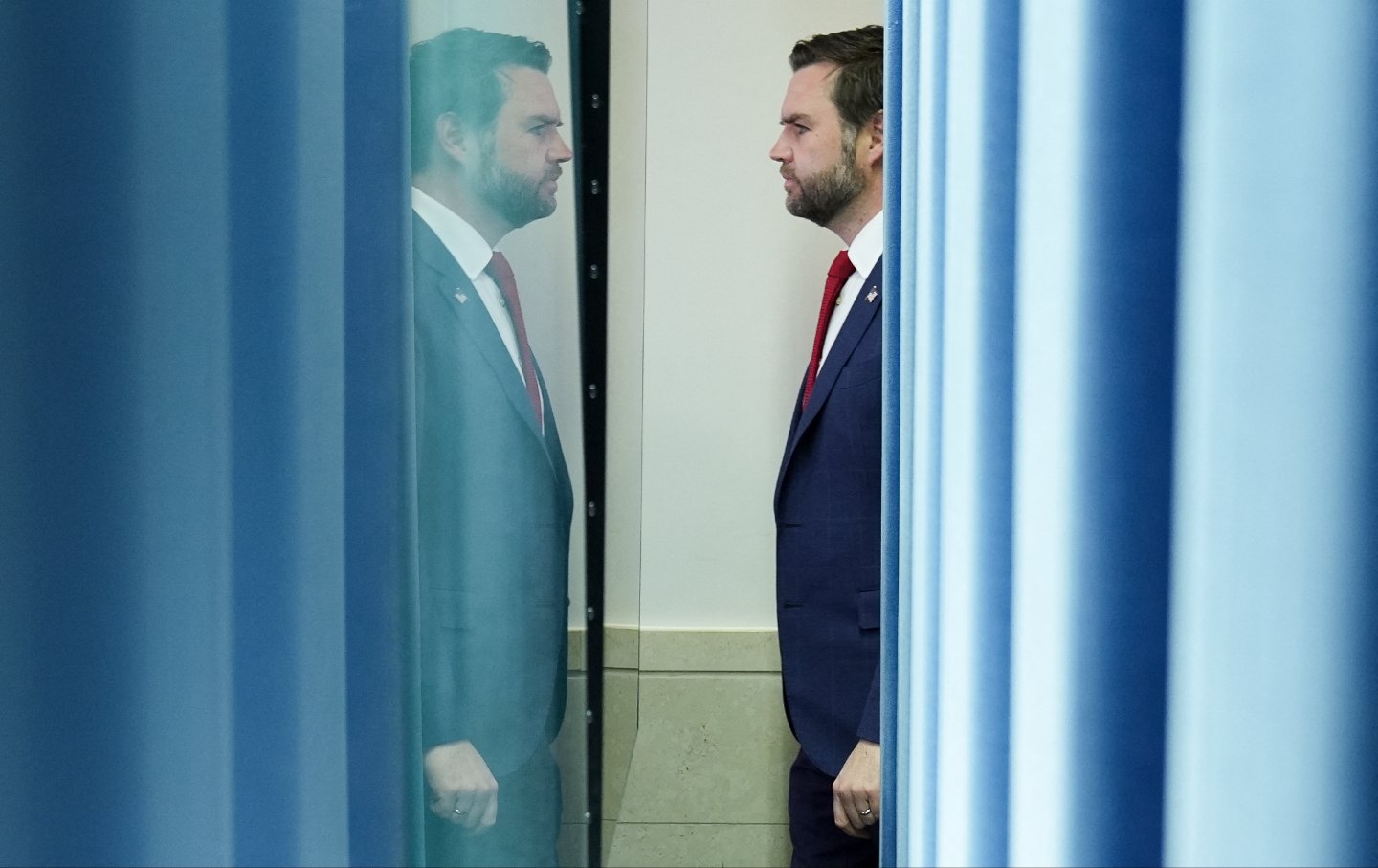
The Agony of JD Vance The Agony of JD Vance
The vice president's main job appears to be to embody the banshee scream of a dying order.
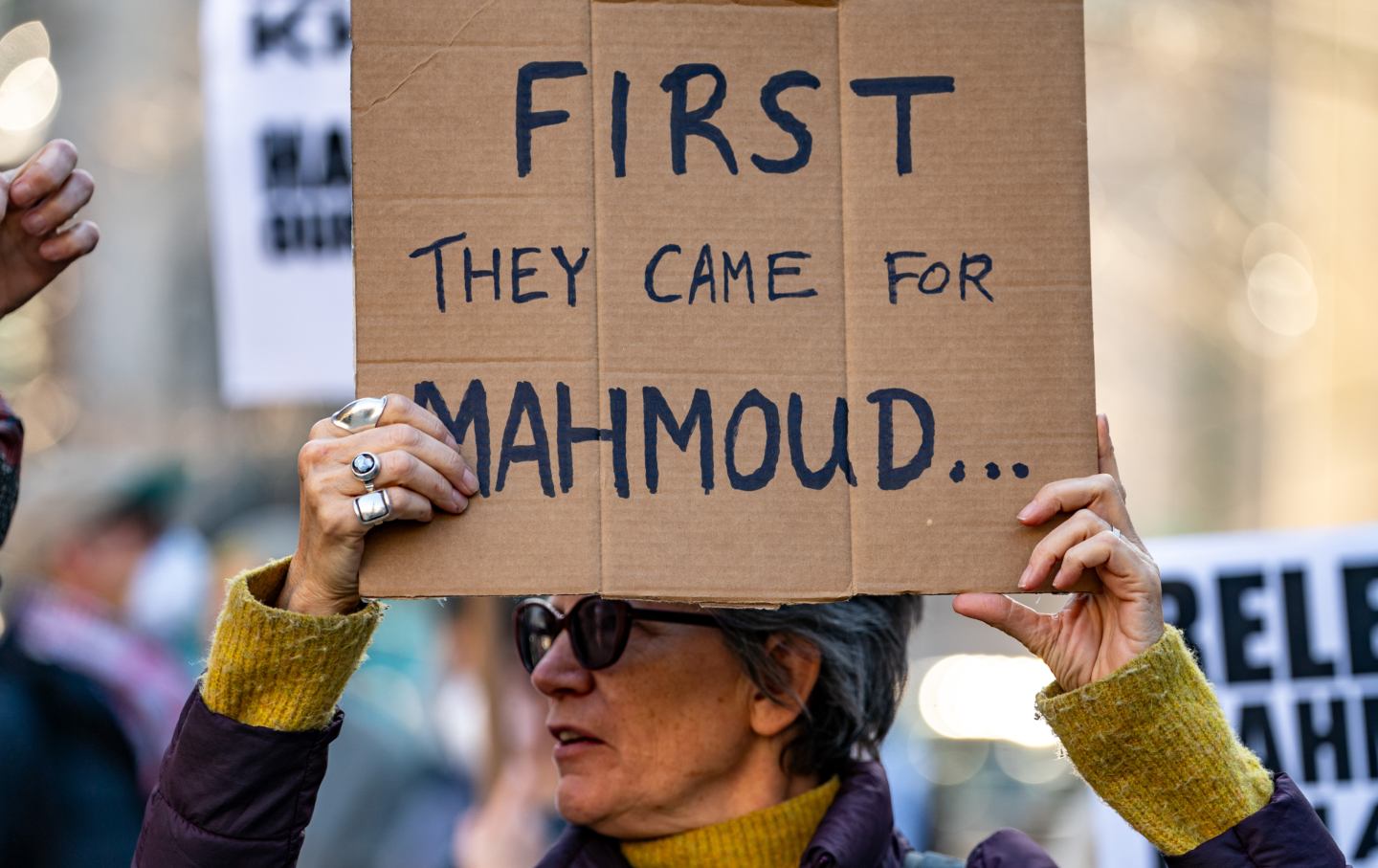
14 House Dems Demanded Mahmoud Khalil’s Release. Where Are the Others? 14 House Dems Demanded Mahmoud Khalil’s Release. Where Are the Others?
All members of Congress swore oaths to defend the right to speak freely and assemble to petition for the redress of grievances. Why did so few of them sign this important letter?
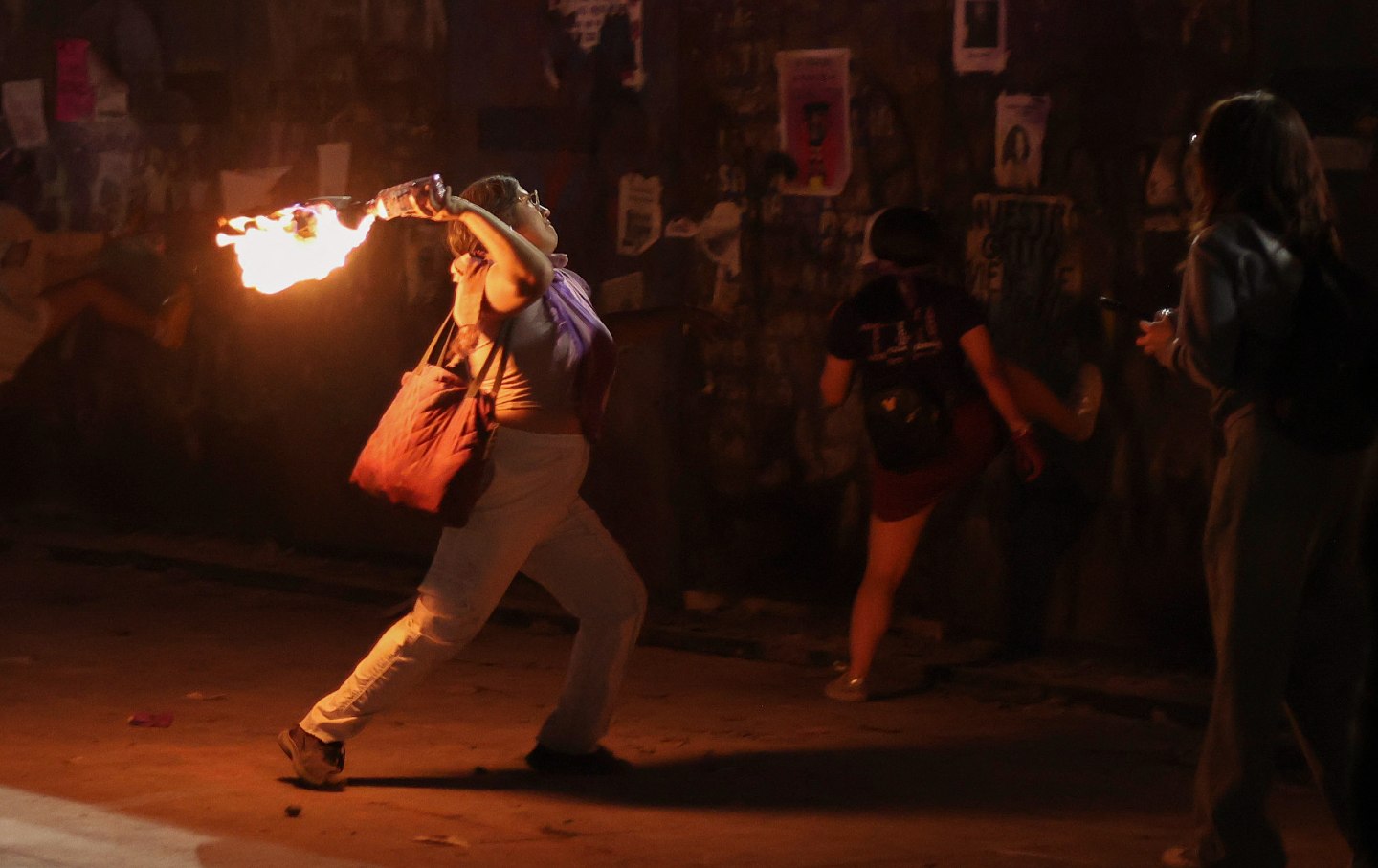
Is Political Violence Ever Acceptable? Is Political Violence Ever Acceptable?
Natasha Lennard argues that it’s harmful to acquiesce to the state’s determinations of violence, while David Cortright writes that violent acts prevent mass resistance movements.


